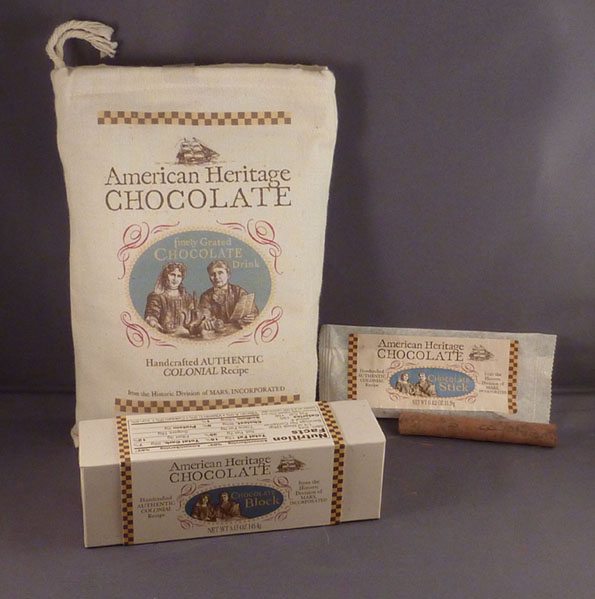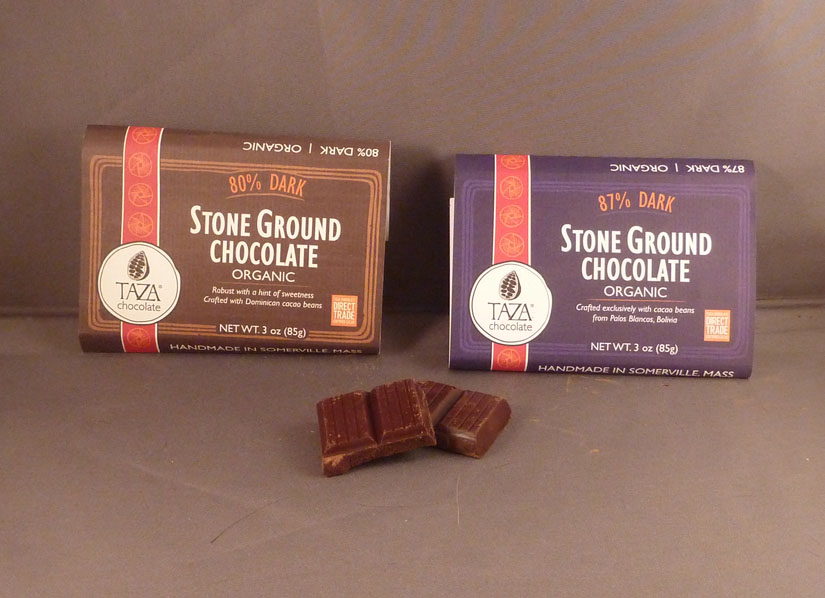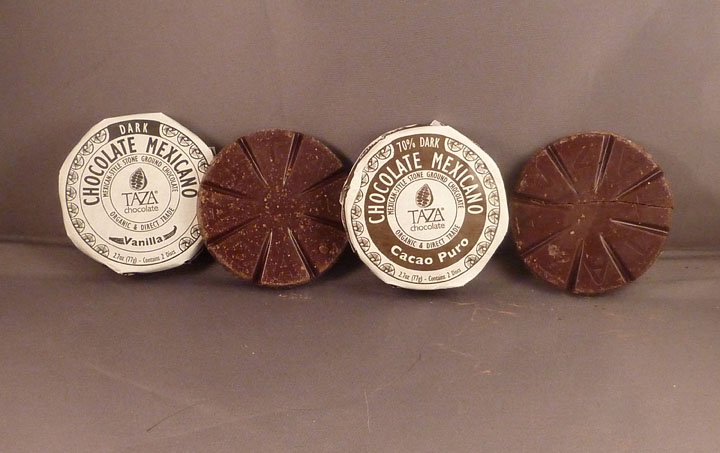Ragged Soldier Sutlery and Vintage Volumes |
|
Generally in Alphabetical Order but with Some Obvious Placement of a Couple of Categories at the Top Home Toys Games Dolls & Accessories Articles: Virginia's Veranda About Us & Picture Books, Modern Books, 19th Century Reproductions Candy Craft Supplies & Sundries Documentation Dolls & Accessories DVD about Emma Edmonds Games Needlework Necessities and Novelties Parlor Games & Entertainments School Supplies Sundries and Craft Supplies Tin Soldiers Toys Wholesale Information Order Form Ordering Information Contact Us Speaking and Consulting |
Period ChocolateOnce considered food only for kings, chocolate made its way into ordinary life. However, unlike its most used form today as solid pieces or bars, early chocolate in the eighteenth and early nineteenth century was most frequently consumed as a beverage. By the civil war period, chocolate had made its way into many cooked goods as well as further variations of beverages. If you look at the Feeding America website for period cookbooks or you can find a period cookbook on google books, you can get recipes for using the chocolate. But, alas for true chocolate lovers, chocolate chip cookies (see the article "What No Chocolate Chip Cookies" in "Virginia's Veranda" to learn about cookies) were still unknown during the civil war period. Also, in researching recipes, sometimes a "chocolate cookie" or other chocolate baked good would not contain any chocolate. Instead, the item was intended to be eaten with a chocolate beverage.
One is American Heritage Chocolate. The picture to the right shows the forms that we carry. And if you look closely at the stick which has been removed from its wrapper, it has developed what is known as "bloom." Bloom is a white coating that sometimes develops on chocolate as it is stored, especially if it is stored in a refrigerator. It doesn't affect the flavor and definitely has no effect on its eatability. This chocolate comes in both a solid form or pre-grated and is flavored with a subtle blend of cinnamon, star anise, orange, vanilla, and -- surprisingly -- cayenne. The solid forms Include a small stick (0.42 oz) which duplicates spiced chocolate sticks which were an ingredient in a beverage known as "Spanish Chocolate." But I'd expect quite a few were snitched while still a solidd and eaten without being made into a beverage. They are a good way to sample the chocolate. The other solid form is a block (6 oz) which can be broken apart and used in cooking. The grated chocolate (12.7 oz) comes in a bag or cannister ready to be made into a hot chocolate beverage - the directions are on the outside of the container but use hot water instead of milk. The other maker of chocolate that we carry is from a small company in Massachusetts. They are making chocolate in the same way it was manufactured during the civil war period. Consequently, it is not as smooth as modern chocolate. The smoothing process - known as conching - wasn't developed until 1879. This chocolate has a feel of containing fine grit which are tiny fragments of the cacao beans. The chocolate itself has a very limited number of ingredients being mostly cacao and sugar. The chocolate from this maker is all in solid form but can be chopped or grated for cooking or making
into a hot chocolate beverage. We carry the following forms: Due to melting above a certain temperature, we cannot guarantee shipments of
chocolate will arrive in their original form if shipped when the temperature is above 85 degrees. If you need
chocolate during
such a time period, we can arrange to have it shipped express with
dry ice added for cooling but there will be additional expense.
Price:
Small Stick (0.42 oz) $ 1.40 If you want to look at the next item in the list,.
|
 So if you are going to make goodies using
period chocolate recipes, to get as close a reproduction you
should use period style chocolate. We have found chocolate from two different manufacturers that could be
used. Just be aware that none of these are milk chocolate. Milk chocolate wasn't invented until after the
civil war period.
So if you are going to make goodies using
period chocolate recipes, to get as close a reproduction you
should use period style chocolate. We have found chocolate from two different manufacturers that could be
used. Just be aware that none of these are milk chocolate. Milk chocolate wasn't invented until after the
civil war period.

 contains only cacao (70%) and sugar. It comes as two disks per package. A single disk and a package
are shown in the left picture.
contains only cacao (70%) and sugar. It comes as two disks per package. A single disk and a package
are shown in the left picture.